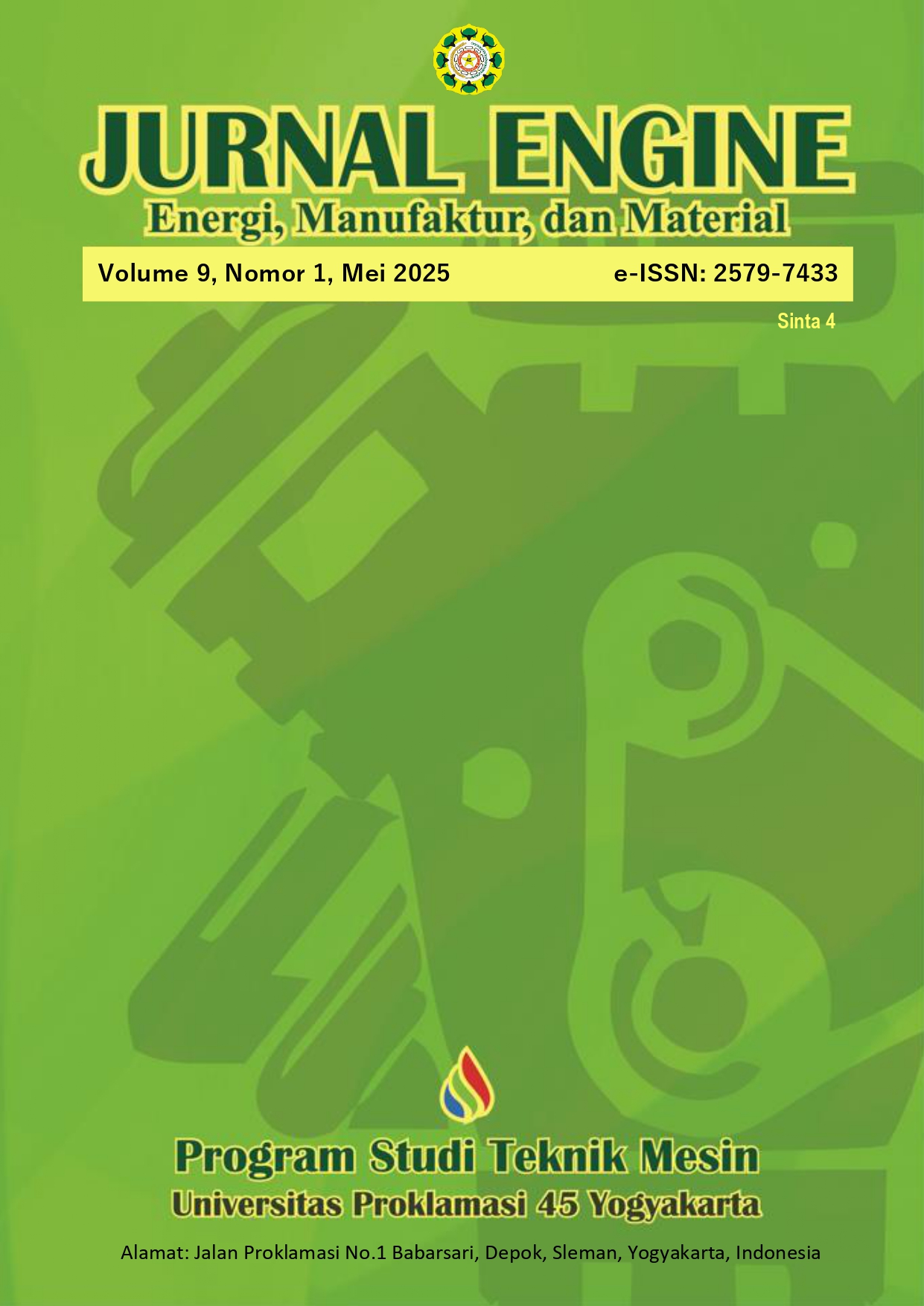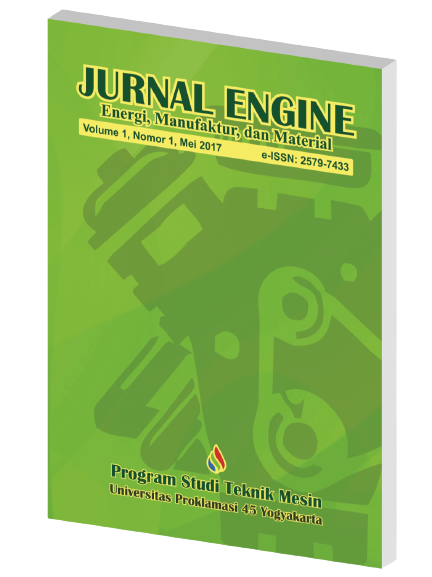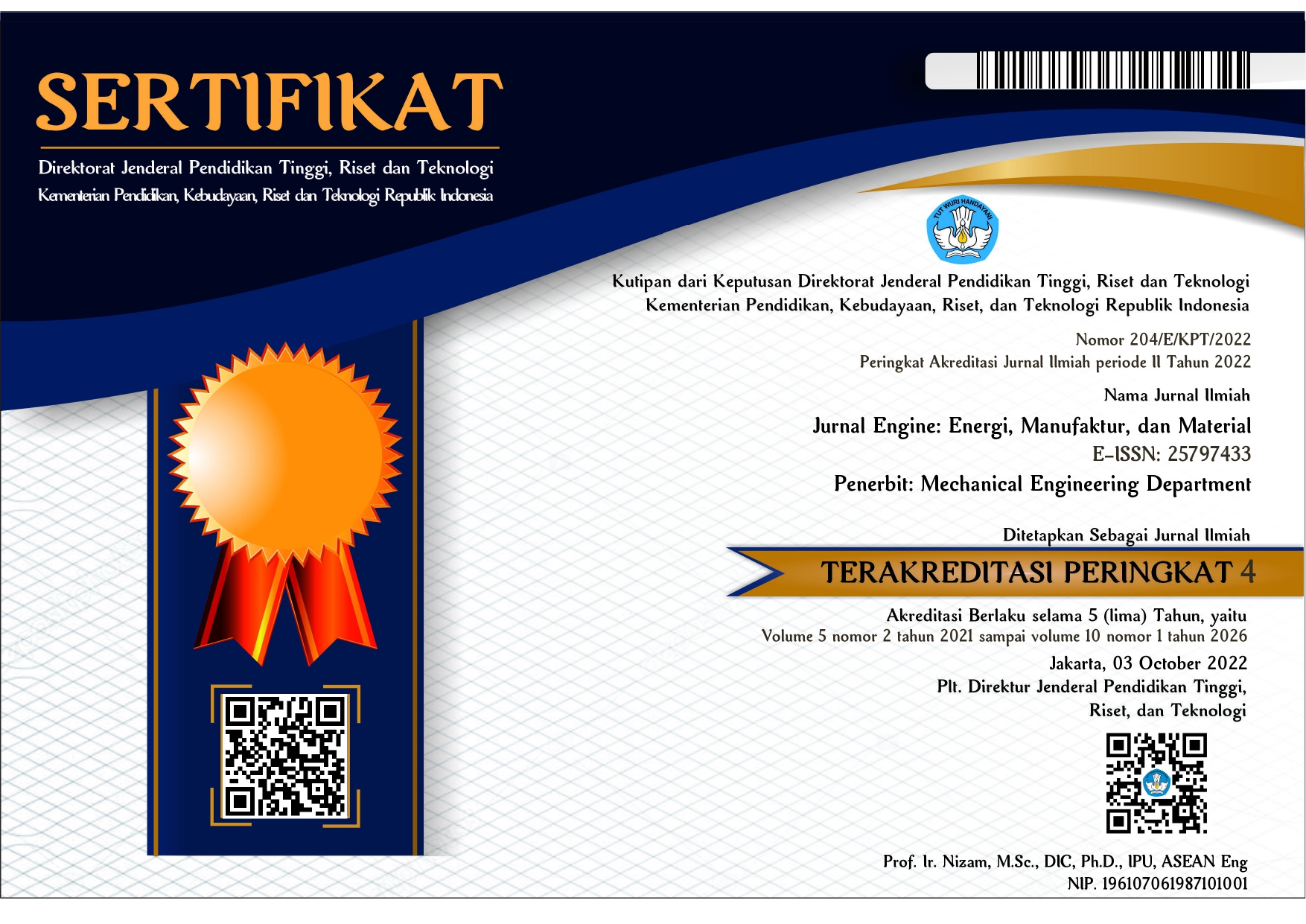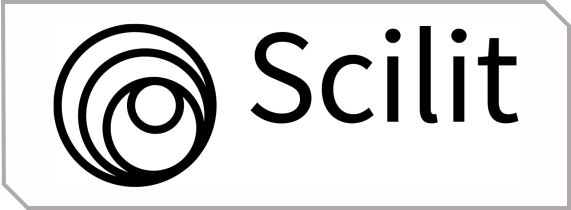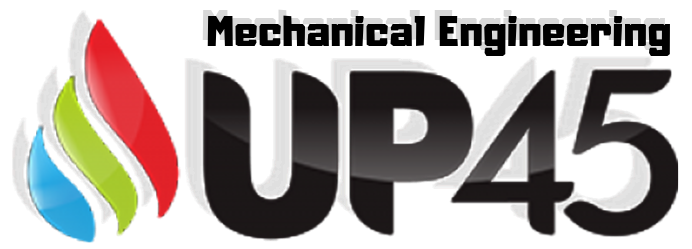Desain Sistem Penjernihan Air Berbasis Tenaga Surya untuk Pengolahan Air Bersih
DOI:
https://doi.org/10.30588/jeemm.v9i1.2149Keywords:
filtration, slow sand filter, solar cell, silica sandAbstract
A slow sand filter is a natural water filtration system that uses fine quartz-rich sand as a filter medium. The filtration process runs by gravity at a slow and even speed over the entire surface of the sand, involving physical, biochemical and biological processes simultaneously. To achieve the desired water quality, the filtration system was designed using 8" PVC pipes. The main aim of this design is to mature the filter sand media and form an effective filter skin layer, so that biochemical and biological processes can take place optimally. In this design, silica sand and gravel media are used for physical and chemical processes, while ultraviolet lamps are used to eliminate E.Coli bacteria in biological processes. The design results show that the resulting product meets the standards of PERMENKES No. 16 of 2005. Irradiation using a UV lamp for one hour shows a reduction in E. Coli bacteria by 29/100 ml. This shows that the longer the exposure, the less bacteria contained in river water. This system can operate for 5 hours with the help of a 100 Wp solar panel, 12 volt 18 Ah battery, and 50 watt DC pump, even just with sunlight. The efficiency of solar panels is greatly influenced by the intensity of sunlight, so the higher the intensity of the sun, the higher the efficiency produced.
References
Chandra, D. P. A. (2021). PENINGKATAN KUALITAS AIR SUNGAI MELALUI SISTEM SARINGAN PASIR LAMBAT (SPL) ALIRAN DOWNFLOW. Universitas PGRI Adi Buana.
Ekadewi, C. Y. (2018). STUDI KINERJA SLOW SAND FILTER DENGAN BANTUAN LAMPU LIGHT EMITTING-DIODE (LED) PUTIH. Institut Teknologi Sepuluh Nopember.
Elisa Rinihapsari, Arneta Syafrinelty Fita Putri, & Bernadeta Hesti Widyaningrati. (2021). Waktu Dan Jarak Efektif Penyinaran Sinar Ultraviolet Pada Mikroba Udara Laboratorium. Jurnal Sains Dan Kesehatan (JUSIKA), 5(1), 66–77.
Herri Purwanto, O., Firdaus, M., Alzahri, S., Setiobudi, A., Kurniawan, R., & Usman, F. (2023). SOSIALISASI PEMANFAATAN METODE SPL (SARINGAN PASIR LAMBAT) SISTEM DOWN FLOW DALAM PENJERNIHAN AIR SUNGAI. Jurnal Pengabdian Kepada Masyarakat, 3(2). http://bajangjournal.com/index.php/J-ABDI
Ivana Lintarsari. (2025). KARAKTERISTIK ALAT PENJERNIH AIR TENAGA SURYA DENGAN KOLEKTOR PLAT GELOMBANG. www.walhi.or.id
Maulana, P. R., & Gunawan, S. (2021). PERANCANGAN LAMPU UVc UNTUK DISINFEKTAN RUANGAN BERBASIS INTERNET OF THINGS (IoT). JURNAL KAJIAN TEKNIK ELEKTRO, 6(1), 82–87.
Rakkito, D., & Yayok, S. (2015). PENYISIHAN E.coli AIR SUMUR MENGGUNAKAN RADIASI SINAR ULTRA VIOLET. Jurnal Ilmiah Teknik Lingkungan, 7(2).
Sariman, S., Swandi, A., Ratnawati, R., Buraerah, Muh. F., & Dipalaya, T. (2023). Desain Prototipe Filter Air Bersih Berbasis Tenaga Surya. Jurnal Ilmiah Ecosystem, 23(2), 414–422. https://doi.org/10.35965/eco.v23i2.2877
Windusari, Y., & Sari Nettaa Permata. (2015). Water Quality of Musi River at Palembang City South Sumatera. Bioeskperimen, 1(1).
Yulianyo, T. B., Taufiq, A. J., & Suyadi, A. (2019). Rancang Bangun Pengaturan Intensitas Sinar Uv (Ultraviolet) Dengan Mikrokontroler PIC Untuk Tanaman. JURNAL RISET REKAYASAELEKTRO, 1(1), 54–70. http://jurnalnasional.ump.ac.id/index.php/JRRE
Downloads
Published
How to Cite
Issue
Section
License
Copyright (c) 2025 Imaniah Sriwijayasih, Aang Wahidin, Priyambodo Nur Ardi Nugroho, Dika Rahayu Widiana, Sumardiono, Boedi Herijono, Rikky Leonard, Septaviola Dini Utami, Masaril Fatahilah, Cindy Putri Maharani (Author)

This work is licensed under a Creative Commons Attribution 4.0 International License.
Authors who publish with Jurnal Engine: Energi, Manufaktur, dan Material agree to the following terms:
Authors retain copyright and grant the Jurnal Engine: Energi, Manufaktur, dan Material right of first publication with the work simultaneously licensed under a Creative Commons Attribution 4.0 International License that allows others to share (copy and redistribute the material in any medium or format) and adapt (remix, transform, and build upon the material) the work for any purpose, even commercially with an acknowledgment of the work's authorship and initial publication in Jurnal Engine: Energi, Manufaktur, dan Material. Authors are able to enter into separate, additional contractual arrangements for the non-exclusive distribution of the journal's published version of the work (e.g., post it to an institutional repository or publish it in a book), with an acknowledgment of its initial publication in Jurnal Engine: Energi, Manufaktur, dan Material. Authors are permitted and encouraged to post their work online (e.g., in institutional repositories or on their website) prior to and during the submission process, as it can lead to productive exchanges, as well as earlier and greater citation of published work (See The Effect of Open Access).

